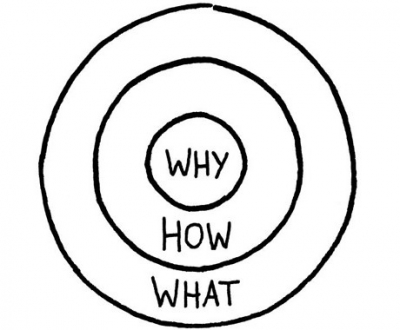For more than 15 years, Merit Career Development has trained thousands of individuals to help them improve their project management (PM) skills. In 2010, we incorporated SimulTrain®, a computer-based, online simulation tool, into all of our PM workshops whether it is a one-, two- or five-day program. SimulTrain always provides an engaging, hands-on, and fun learning experience that significantly boosts skill retention. Essentially, adults; PMs, nurses, accountants or other professionals who want to master these skills, really appreciate this program! But 6th graders??
 Through a confluence of circumstances, that began with an invitation from the Keystone PMI Education Foundation Coordinator, Mr. Myles Miller, and the Keystone Chapter of the Project Management Institute, we supported a pilot with 6th graders at the Eyer Middle School in Pennsylvania’s North Penn School District. The parents and students were quite interested in learning the life skill of project management. While some of us were doubtful that our workplace-related program would resonate with these young students, we had enough people willing to give this a try that we scheduled the program. (You can see SimulTrain in action with adults.)
Through a confluence of circumstances, that began with an invitation from the Keystone PMI Education Foundation Coordinator, Mr. Myles Miller, and the Keystone Chapter of the Project Management Institute, we supported a pilot with 6th graders at the Eyer Middle School in Pennsylvania’s North Penn School District. The parents and students were quite interested in learning the life skill of project management. While some of us were doubtful that our workplace-related program would resonate with these young students, we had enough people willing to give this a try that we scheduled the program. (You can see SimulTrain in action with adults.)For several weeks before the competition, Myles instructed the students about PM fundamentals and common workplace terminology. When the big day arrived, the students formed teams of four and competed for the best scores throughout the event. In addition to Merit bringing the technology and leadership to the school (the same that is provided for adults), Buckeye Pipeline and the PMI Keystone Chapter sponsored this program, providing the funding for food, t-shirts and trophies for the students.
John Juzbasich, Merit’s CEO, facilitated the SimulTrain “competition”, and confirmed that he ran this program the same way he does for the adults. He provided an overview of the simulator screens, the project at hand — in this case planning a soccer event — timed intervals for the program, and review periods. Scoring took place throughout the competition.
We were amazed at how well the students grasped the technology, the project management concepts and the “game” overall. They did really well and seemed energized, enthused and anxious to play this again. When looking at their scores in each category, we saw that the students performed roughly on par with most of the adults who’ve participated. John Juzbasich insisted that he did not adjust the pace or in any way, make it easier for the kids than the adult version we regularly deliver. Don’t just take my word, so please click through to these short videos and see for yourself.
 The simulation project management competition also generated interest from many families whose children did not have the opportunity to participate the first time this was held, prompting a follow up event scheduled for Spring, 2017. Because the interest is so high, the school is planning to make SimulTrain a regular part of the Eyer Middle School curriculum. A number of universities are also interested in adding project management with simulation to their curriculum. The University of Scranton recently held a competition among their engineering students. There is a similar day scheduled at Lehigh University next month.
The simulation project management competition also generated interest from many families whose children did not have the opportunity to participate the first time this was held, prompting a follow up event scheduled for Spring, 2017. Because the interest is so high, the school is planning to make SimulTrain a regular part of the Eyer Middle School curriculum. A number of universities are also interested in adding project management with simulation to their curriculum. The University of Scranton recently held a competition among their engineering students. There is a similar day scheduled at Lehigh University next month.Everyone benefits by learning project management skills for school, work and life planning. If you want to expose your child or yourself to SimulTrain, the best project management learning program available, contact Jim Wynne at 610-225-0449 or jwynne@meritcd.com.

 As the image to the left illustrates, participatory learning, especially using simulation for practice, provides the highest level of retention for training, second only to “teaching others.”
As the image to the left illustrates, participatory learning, especially using simulation for practice, provides the highest level of retention for training, second only to “teaching others.”
 Studies show that lack of EQ may limit a person’s ability to achieve results. Lower EQ scores correlate with lower merit pay increases, lower job satisfaction and more burnout. Managers’ and supervisors’ EQ scores correlate with their performance ratings.
Studies show that lack of EQ may limit a person’s ability to achieve results. Lower EQ scores correlate with lower merit pay increases, lower job satisfaction and more burnout. Managers’ and supervisors’ EQ scores correlate with their performance ratings. We all have specific words or phrases that are steeped in emotion. During the 1960s and 70s, the term “nuclear power” raised a great deal of emotion—both positive and negative. Similarly today we have emotionally charged words or phrases such as “gun control”, terrorism, and consumer privacy. It is important to recognize one’s own emotionally charged phrases and stop the emotional hijacking that is about to take place.
We all have specific words or phrases that are steeped in emotion. During the 1960s and 70s, the term “nuclear power” raised a great deal of emotion—both positive and negative. Similarly today we have emotionally charged words or phrases such as “gun control”, terrorism, and consumer privacy. It is important to recognize one’s own emotionally charged phrases and stop the emotional hijacking that is about to take place. The CrossFit program was developed to enhance an individual’s competency at all physical tasks. Athletes are trained to perform at multiple, diverse, and randomized physical challenges. This type of fitness is demanded of military and police personnel, firefighters, and many sports requiring overall physical prowess.
The CrossFit program was developed to enhance an individual’s competency at all physical tasks. Athletes are trained to perform at multiple, diverse, and randomized physical challenges. This type of fitness is demanded of military and police personnel, firefighters, and many sports requiring overall physical prowess. How can crossfit training your mind benefit you in your workplace? Cross-functional training has many benefits for organizations as well as employees. At an organizational level, cross training skillsets help safeguard the organization against widening skills gaps. Organizations that cross-train employees across a range of functions put themselves in a good position to prevent sudden shortfalls and manage surges in specific areas when there is a spike in demand. On an individual level, cross training enables employees to explore and assess alternative interests and abilities. It also enables managers to identify and nurture employees who show exceptional talent in a particular function. Cross-training yourself to learn new skills, can increase your employability and enable you to stay relevant.
How can crossfit training your mind benefit you in your workplace? Cross-functional training has many benefits for organizations as well as employees. At an organizational level, cross training skillsets help safeguard the organization against widening skills gaps. Organizations that cross-train employees across a range of functions put themselves in a good position to prevent sudden shortfalls and manage surges in specific areas when there is a spike in demand. On an individual level, cross training enables employees to explore and assess alternative interests and abilities. It also enables managers to identify and nurture employees who show exceptional talent in a particular function. Cross-training yourself to learn new skills, can increase your employability and enable you to stay relevant.
 Why do we work at Merit:
Why do we work at Merit: Experienced project managers know that their work is about more than scheduling, assigning tasks, and tracking progress. While ultimately their job is to deliver on time and on budget, getting to the finish line often involves challenges that can’t be predicted and whose answers aren’t obvious. Good project managers are in the thick of things, analyzing the issues their teams face and leading in the development of their solutions.
Experienced project managers know that their work is about more than scheduling, assigning tasks, and tracking progress. While ultimately their job is to deliver on time and on budget, getting to the finish line often involves challenges that can’t be predicted and whose answers aren’t obvious. Good project managers are in the thick of things, analyzing the issues their teams face and leading in the development of their solutions.